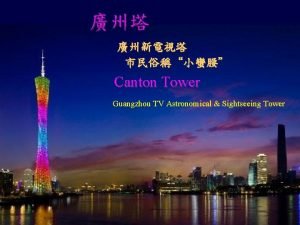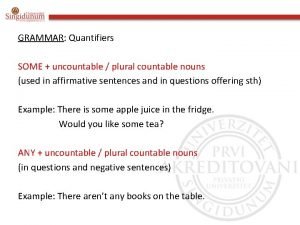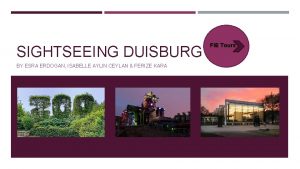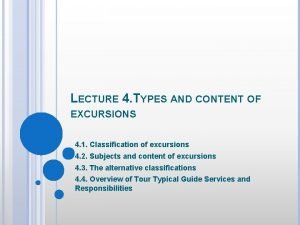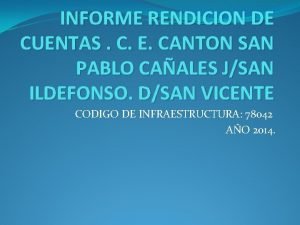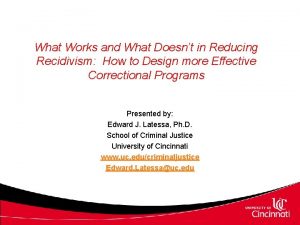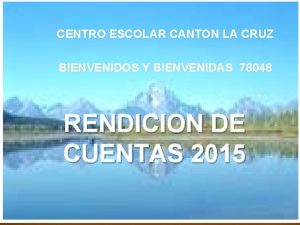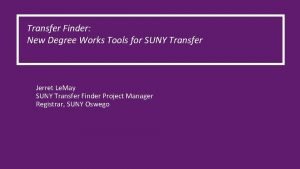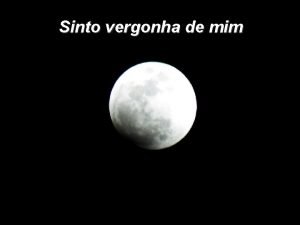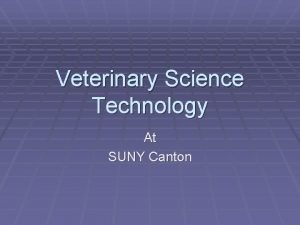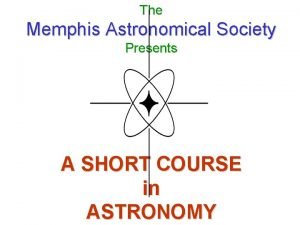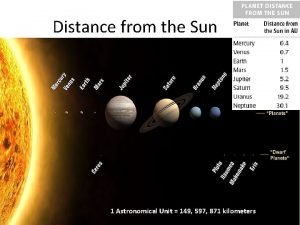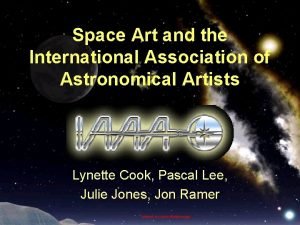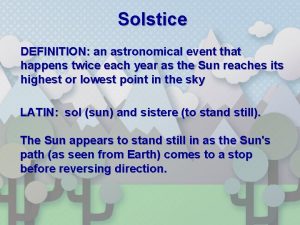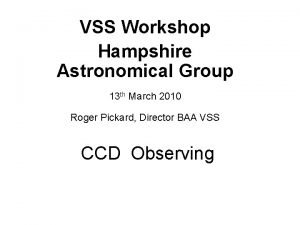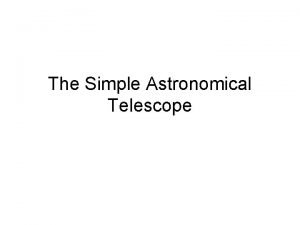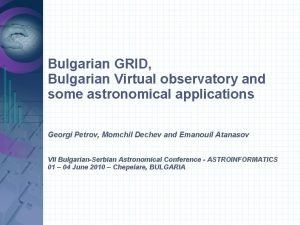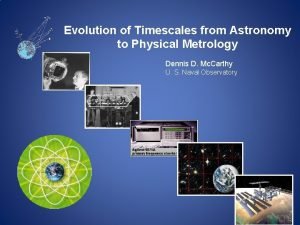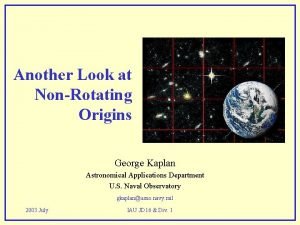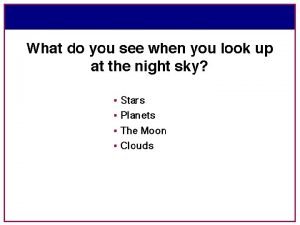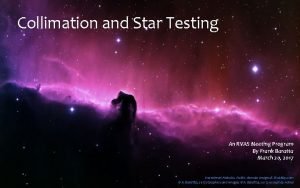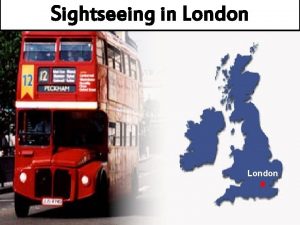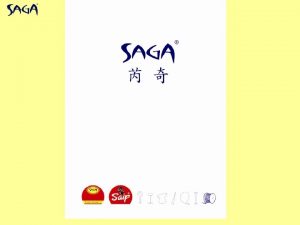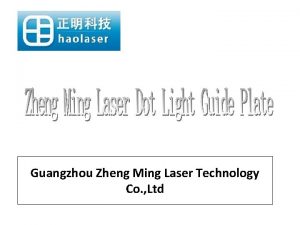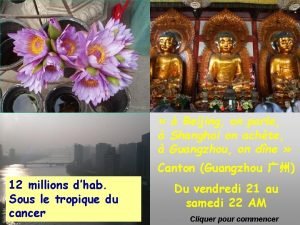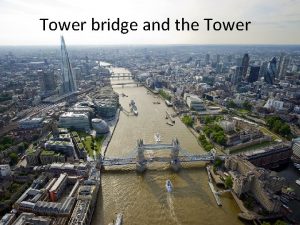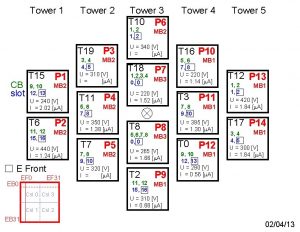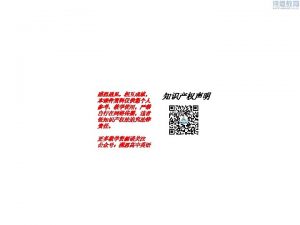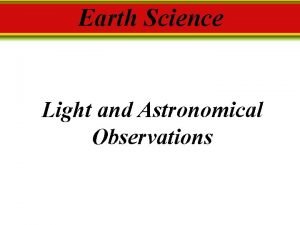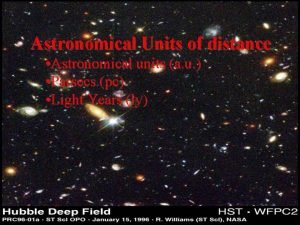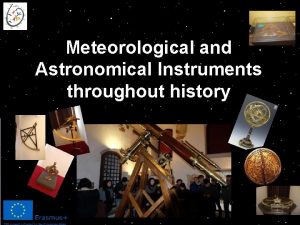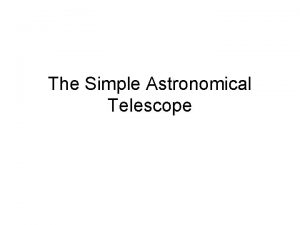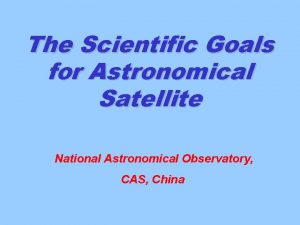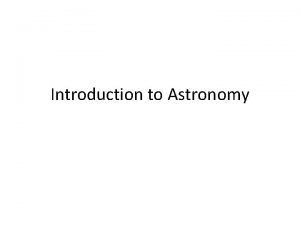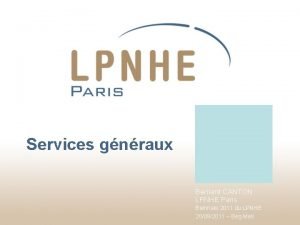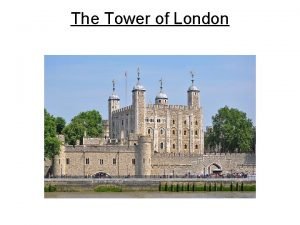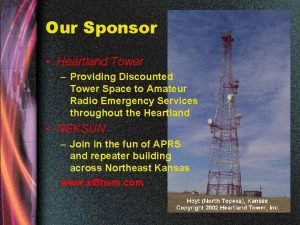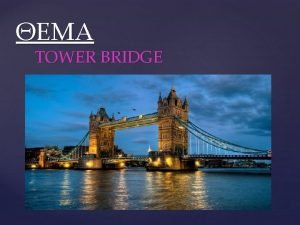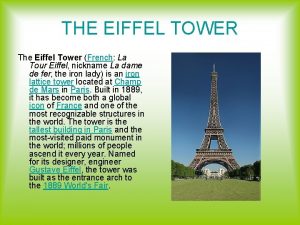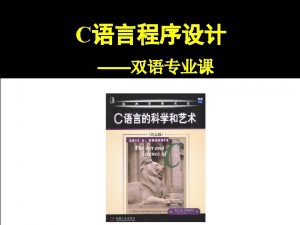Canton Tower Guangzhou TV Astronomical Sightseeing Tower 2011





























- Slides: 29

廣州塔 廣州新電視塔 市民俗稱“小蠻腰” Canton Tower Guangzhou TV Astronomical & Sightseeing Tower

2011年 9月1日,位於廣州塔頂部的世界上最高的橫向摩天 輪面向公眾開放。該摩天輪位於塔頂450~ 454米處,主要由觀 光球艙、軌道系統、登艙平台、控制系統等構成。整套摩天輪 擁有16個觀光球艙,每個球艙直徑 3. 2米,可容納4~ 6名乘客 。艙圍繞傾斜的橢圓形塔頂緩緩旋轉,遊客可在其中鳥瞰廣州 全貌。 The world's 'highest ferris wheel' is set to open for business today, 1 st September, 2011, on top of a 1, 480 ft tower in China - with passengers riding in see-through pods. Built on the 450 -meterhigh Canton Tower, known as the Guangzhou TV Tower, the amazing wheel consists of 16 pods holding a total of 96 fearless passengers. Each capsule is just over three meters wide, and built using a special macromolecule material which allows a 360 -degree crystal clear view.






Canton Tower, formerly Guangzhou TV Astronomical and Sightseeing Tower, is an observation tower in the Haizhu District of Guangzhou, China. It became operational on 29 September 2010 for the 2010 Asian Games. The tower briefly held the title of tallest completed tower in the world, replacing the CN Tower, before being surpassed by the Tokyo Sky Tree in 2011. It is the tallest structure in China, the seventh-tallest structure in the world, and the fourth-tallest freestanding structure in the world. It is named after "Canton", the traditional European name of the city. The idea of the tower's design is simple. The form, volume and structure is generated by two ellipses, one at foundation level and the other at a horizontal plane at 450 m. These two ellipses are rotated relative to another. The tightening caused by the rotation between the two ellipses forms a "waist" and a densification of material half way up the tower. This means that the lattice structure, which at the bottom of the tower is porous and spacious, becomes denser at waist level. The waist itself becomes tight, like a twisted rope; transparency is reduced and views to the outside are limited. Further up the tower the lattice opens again, accentuated here by the tapering of the

Structural engineer Prof. Dr. Joop Paul introduced near mass customisation to the joint design, in combination with parametric design methods, and applied a simple structural concept of three elements: columns, rings and braces, to this more complex geometry. The waist of the tower contains a 180 m open-air skywalk where visitors can physically climb the tower. There are outdoor gardens set within the structure. The interior of the tower is subdivided into programmatic zones with various functions. A deck at the base of the tower hides the tower's functional workings. All infrastructural connections -- metro and bus stations -- are situated underground. This level also includes exhibition spaces, a food court, a commercial space, a parking area for cars and coaches. There are two types of lifts, slow-speed panoramic and high-speed double-decker. The zone from 80 to 170 m consists of a 4 D cinema, a play-hall area, restaurants, coffee shops and outdoor gardens with teahouses. An open-air staircase, the Skywalk, starts at the height of 170 metres and spirals almost 200 metres higher, all the way through the waist. The top zone of the tower begins above the stairway, housing various technical functions as well as a two-storey rotating restaurant, a damper and the upper observation levels. The rooftop has a outdoor public observatory 488 m above the ground, which takes the form of a terraced elliptical space, roughly the size of a small city




















謝 謝 瀏 覽 Thank you for watching Edition 2012 -03 -15 by Herbert K. Lau
 Guangzhou appels menu
Guangzhou appels menu Sightseeing countable or uncountable
Sightseeing countable or uncountable Aylin ceylan
Aylin ceylan Tours in trikala
Tours in trikala Types of excursion
Types of excursion Dr nosheen ishaque
Dr nosheen ishaque Smha alliance
Smha alliance Canton
Canton Canton usd 66
Canton usd 66 Ctcc canton ohio
Ctcc canton ohio Canton police department records
Canton police department records Canton
Canton Degree works suny
Degree works suny Imagem
Imagem Veternary tech
Veternary tech Canton area school district
Canton area school district Memphis astronomical society
Memphis astronomical society When it winter
When it winter International association of astronomical artists
International association of astronomical artists Solstice definition
Solstice definition Hampshire astronomical group
Hampshire astronomical group Guildford astronomical society
Guildford astronomical society Angular magnification telescope
Angular magnification telescope Astronomical
Astronomical Astronomical time scale
Astronomical time scale Astronomical applications department
Astronomical applications department Sc002 constellation chart
Sc002 constellation chart Astronomical clock lyon france
Astronomical clock lyon france Star testing telescopes
Star testing telescopes National core standards south africa
National core standards south africa
